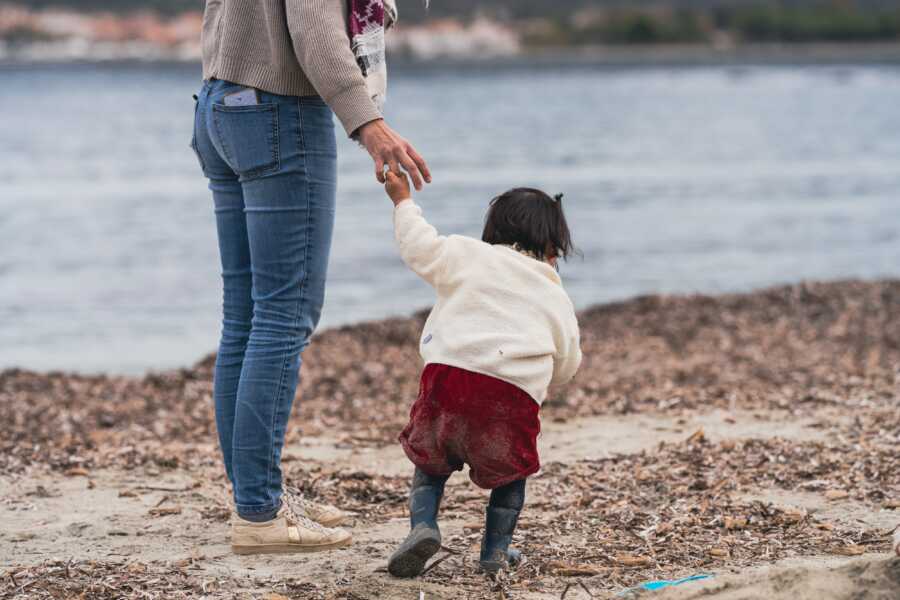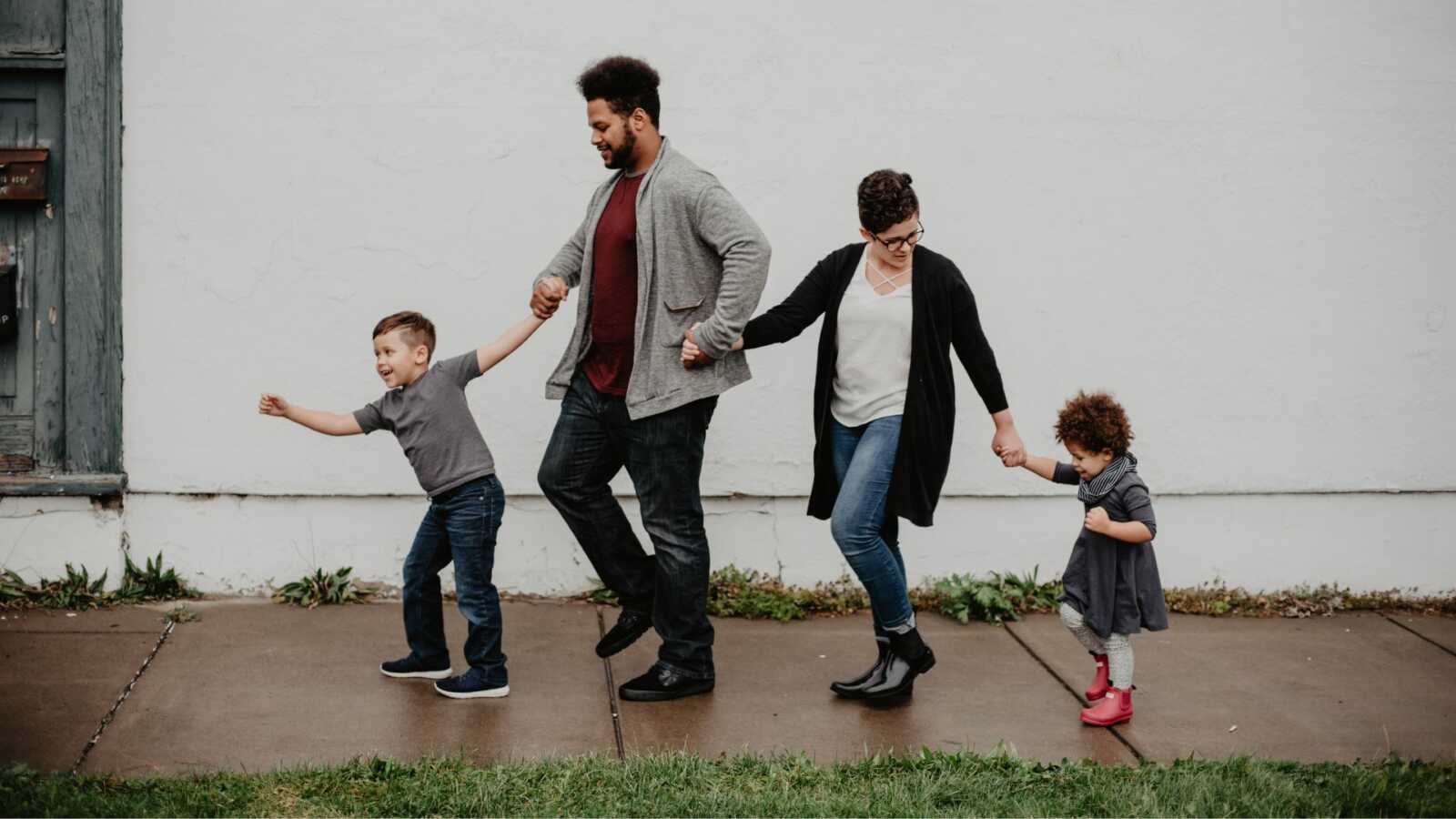My partner and I knew from the beginning of our parenting journey that we wanted to have an open adoption with our child’s birth mother. For us, it was a very easy choice to make; there wasn’t a fiber in our being that wanted to deny our child the origins in which they came from. In the end, our choice personally changed our lives forever and for the better.
When we jumped down the research rabbit hole about 7 years, the information to read about open adoption would make a librarian tremble. We were determined to read, learn, and become qualified parents because this is what we felt we were born to do.
After years of research and firsthand experience, here are our answers (with help from our social worker who is an adoption professional) to some of the top questions pertaining to open adoption:
What is open adoption?
Open adoption is a type of adoption when adoptive parent(s) and biological parent(s) directly meet and share the experience of giving birth to and/or raising an adoptee.
Continued contact between adoptive and biological parents after the birth of an adoptee is rare, optional, and oftentimes has an unnecessary stigma surrounding it.
When deciding between an open or closed adoption, it is important to evaluate what is safest and most beneficial to not only the adoptive and biological parents, but the adoptee as well.
What is the purpose of open adoption?
Open adoption can help support the overall wellbeing of an adopted child by allowing them access to love and support from both their birth parents and adoptive parents.
This can be beneficial to not only the adopted children, but also the adoptive family, who may learn how to better address questions of origin as well as how to carry on values and traditions stemming from the biological family.
What is the difference between open and closed adoption?
Closed adoption is when the biological family of an adoptee is allowed zero contact with the adoptive family. While this is more rare nowadays, it is always an option.
It is important to note, however, that the biological parent(s) are in control of how much or how little contact they want and this needs to be respected.
An open one, on the other hand, means contact is open and fluid between a biological and adoptive family. After an adoptee is born, it is up to each family to set boundaries. Some families choose to break things off immediately, while others choose to hang on for longer.
In our personal case, we all knew we wanted an open adoption because of how incredibly painful it was for the biological mother to lose access to the child they so dearly loved but couldn’t care for at the time. On top of that, as first-time parents, we were all scared to death. Why not be there together, supporting each other?

What does an open adoption look like?
It varies, but a fully open adoption may mean biological and adoptive parents stay in touch regularly after delivery. Other times, it may be more of a semi-open adoption and just be throughout the duration of the pregnancy journey.
I suggest avoiding a complete open adoption directly after placement, as the adoptive family needs time and space to feel like a complete family before the biological family becomes more involved. That being said, contact can and should continue as long as it is beneficial to all involved parties.
Pre-Birth
An open adoption pre-birth can mean the adoptive parent(s) of an adoptee are allowed to be present for pregnancy appointments as well as be in the delivery room for the birth of the adoptee. Some other examples can include regular ultrasound photos sent via text message, email, or social media, as initiated by the birth parent(s).
Pre-birth open adoption can be beneficial to the biological parent(s) in that it can help ease anxiety and ensure their biological child will be loved and taken care of. It can also provide adoptive parent(s) the opportunity to instantly bond and develop an attachment with their adoptive child.
In some cases, it is wise to practice caution and not become too enmeshed with one another due to the possibility of a failed adoption at or before the time of birth. A failed adoption is when a birth parent changes their mind about adoption and assumes legal guardianship of a potential adoptee, thus removing them from the adoption process entirely.
Post-Birth
Open adoption post-birth is different for every family but may entail the adoptive parent(s) allowing the biological parent(s) to be present for things like grocery runs, doctor’s appointments, hangouts, special events, and holidays.
It means different things to different people and there are varying levels of openness practiced.
Can adoptive parents close an open adoption?
Yes. After the birth of an adoptee, if an adoptive parent feels strongly that there is a safety issue or other pressing concern, this can be discussed with the agency and/or social worker.
Sometimes, if the birth mom is using drugs or is mentally/emotionally unstable and there is potential for danger if they are allowed contact with the adoptive family, they are able to discontinue contact. Luckily, this is more of a rare occurrence and does not happen often.
How much does it cost?
Cost isn’t determined by whether an adoption is open or closed adoption, but rather by the living expense requirements and needs of the birth mother. This varies from state to state.
Is open adoption a good idea?
It is often an excellent idea because it enables the birth parent(s) to have some control and knowledge of where their baby will be placed. It also allows adoptive parents get to know where their child came from. This is useful in helping the child later on in life with any questions about their upbringing.
When determining what type is best for your family, parents and adoptive families should closely evaluate any and all concerns pertaining to maintaining the safety and happiness of the adoptee.
Tips for adoptive parents:
- Research adoption agencies in your state.
- Search for specialized attorneys in your residential city.
- Look up social workers in your city.
- Find out about financial loans or grants available.
- Contact your city’s local family social services to schedule a constellation.
This story was submitted to Love What Matters by adoptive dad Erik Alexander and his social worker Suzanne Loeb, and augmented by Sophia San Filippo. You can follow Erik’s journey on Instagram. Submit your own story here.
Read more stories from Erik:
Do you know someone who could benefit from reading this? SHARE this story on social media with family and friends.


